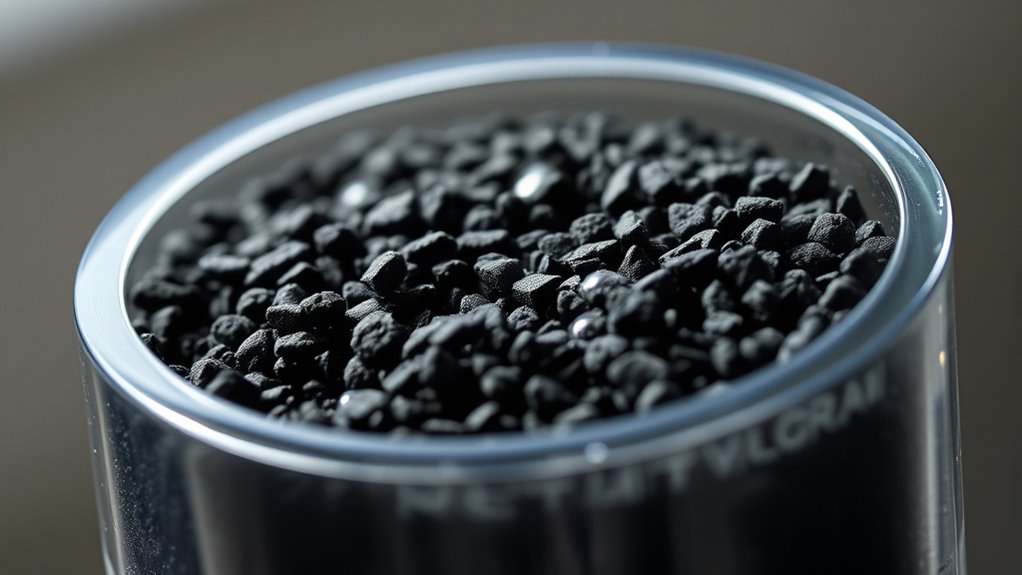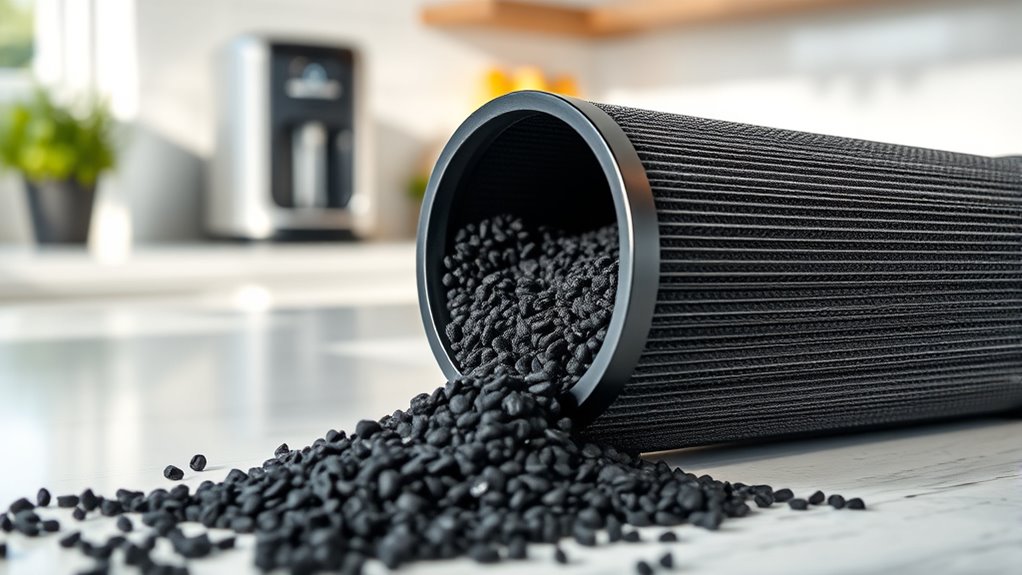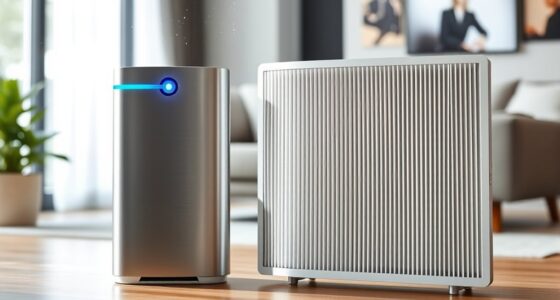Activated carbon filters are definitely worth the extra cost if you want effective odor and chemical removal. They work through adsorption, trapping pollutants and odors on their porous surfaces, which makes them highly efficient for improving air and water quality. Although they cost more upfront, their long-lasting performance and ability to address a broad range of contaminants often justify the investment. To learn how to maximize their benefits and what to think about, explore further details.
Key Takeaways
- They effectively remove odors and chemical vapors, providing cleaner, healthier air compared to standard filters.
- Their high adsorption capacity justifies higher costs through superior odor and contaminant elimination.
- Regular replacement is necessary to maintain performance, adding ongoing maintenance expenses.
- They are ideal for environments needing comprehensive chemical and VOC removal, reducing health risks.
- Overall, their ability to improve air quality often outweighs the initial investment for many users.

Have you ever wondered how to effectively remove unwanted odors and contaminants from your water or air? If so, activated carbon filters might be worth contemplating, especially if you’re looking for a reliable solution for odor removal. These filters work through a process called adsorption, where contaminants and odors are attracted and held onto the surface of the carbon particles. The key to their effectiveness lies in their adsorption efficiency, which determines how well they can trap various pollutants. When you choose an activated carbon filter, you’re investing in a technology designed specifically to target and reduce a wide range of volatile organic compounds, chemicals, and unpleasant smells, making your environment more pleasant and healthier.
Activated carbon filters effectively remove odors and contaminants through adsorption, improving air and water quality.
The high adsorption efficiency of activated carbon filters makes them particularly good at odor removal. They can eliminate cooking smells, pet odors, cigarette smoke, and even some industrial fumes. Unlike simple filtration methods that merely block larger particles, activated carbon captures smaller molecules responsible for many odors and chemical vapors. This makes them a popular choice for homes, offices, and even industrial settings. Their ability to adsorb a broad spectrum of contaminants means that you can rely on them to improve air quality without the need for multiple filtration systems. The porous nature of activated carbon provides a vast surface area, increasing their capacity to trap odors and chemicals effectively. This increased surface area directly correlates with their adsorption efficiency, ensuring that odors don’t just pass through or get temporarily masked but are genuinely removed from your environment.
However, it’s important to contemplate the trade-offs. Activated carbon filters tend to be more expensive than standard filters, and their lifespan depends heavily on usage and the level of contaminants. Over time, their adsorption sites become saturated, reducing their effectiveness for odor removal. When this happens, you’ll need to replace or regenerate the filters to maintain ideal performance. Despite the extra cost, many users find that the benefits of cleaner air and better odor control justify the investment. If you’re sensitive to chemical smells or want a more thorough purification process, activated carbon filters are often worth the extra expense. They provide peace of mind knowing that harmful chemicals and persistent odors are being actively reduced, rather than just masked.
In the end, whether activated carbon filters are worth the cost depends on your specific needs and sensitivities. If odor removal and chemical filtration are priorities, then these filters offer a level of performance that cheaper options can’t match. Their superior adsorption efficiency ensures that you’re addressing the root causes of odors and contaminants, leading to a fresher, healthier environment. While they may require a larger initial investment and regular maintenance, the benefits of cleaner air and water often outweigh the costs for those seeking quality and reliability.
Frequently Asked Questions
How Long Do Activated Carbon Filters Typically Last?
The filter lifespan for activated carbon filters typically ranges from 2 to 6 months, depending on usage and water quality. You should monitor the replacement frequency to guarantee peak performance, as filters become less effective over time. Regularly checking your filter helps maintain water purity. Generally, replacing your activated carbon filter every few months ensures continuous filtration and keeps your water tasting fresh and clean.
Are Activated Carbon Filters Safe for Children and Pets?
You might wonder if activated carbon filters are safe for children and pets. Generally, they’re safe when used properly, as they remove harmful contaminants and odors. However, you should verify the filters are certified and avoid exposure to the carbon dust. For children safety and pet protection, choose filters with non-toxic materials and keep the device out of reach. Always follow manufacturer guidelines to ensure safe, effective air purification.
Can Activated Carbon Filters Remove Viruses From Water?
Think of activated carbon filters as the gatekeepers of your water, but they aren’t superheroes against viruses. While they excel at chemical absorption and removing odors, their viral filtration isn’t foolproof. They can catch some larger virus particles, but tiny ones often slip through, making them less reliable for virus removal. For complete safety, consider additional filtration methods like UV sterilization alongside activated carbon.
Do Activated Carbon Filters Affect Water Ph Levels?
You might wonder if activated carbon filters affect water pH levels. They generally don’t cause significant pH adjustment, but they can influence water acidity slightly by removing contaminants that may alter pH. If you’re concerned about maintaining specific pH levels, it’s good to test your water after filtration. Overall, activated carbon filters mainly improve taste and odor without drastically changing your water’s pH balance.
Are There Environmentally Friendly Options for Disposing of Used Filters?
Did you know that nearly 85% of plastic waste ends up in landfills or oceans? When it comes to disposing of used filters, recycling options are limited but improving. You might consider biodegradable filters made from natural materials, which break down faster and reduce environmental impact. Always check if your local recycling program accepts filter components, or look for brands that offer eco-friendly disposal solutions to help protect the environment.
Conclusion
While activated carbon filters might seem pricey, they’re worth the investment if you want cleaner, better-tasting water. Don’t let the upfront cost discourage you—think of it as saving money on bottled water and avoiding potential health risks. Plus, their ability to remove odors and chemicals makes them a smart choice for your home. Ultimately, the improved water quality and added peace of mind make the extra cost a small price for better health.









